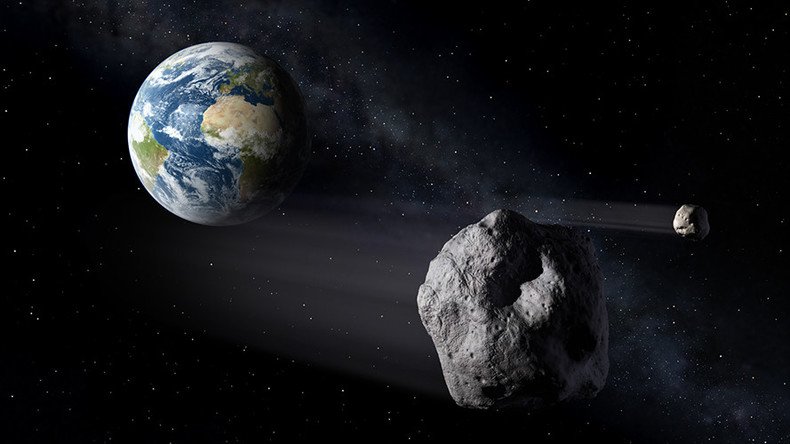Asteroid size of 40 football fields to scoot by Earth in September

An asteroid the length of about 40 soccer fields will shoot by Earth this September. Hopefully NASA won’t need to deploy its planetary defense system, however, as the giant rock is not expected to pose a threat.
Asteroid Florence, named after 19th-century English nursing pioneer Florence Nightingale, is on track to pass at a distance of 4.4 million miles (7 million km).
Tipped to be one of the largest asteroids to ever fly by Earth, the wandering space rock last took a similar path back in 1890.
READ MORE: Total solar eclipse: What you need to know (VIDEO)
“While many known asteroids have passed by closer to Earth than Florence will on September 1, all of those were estimated to be smaller,” Paul Chodas, of NASA’s Jet Propulsion Laboratory, said.
“Florence is the largest asteroid to pass by our planet this close since the NASA program to detect and track near-Earth asteroids began."
A large asteroid will pass Earth safely on Sept. 1 at about 18 times the distance between the Earth and the Moon: https://t.co/rOn5It1v2Jpic.twitter.com/0TkCxhMFau
— NASA (@NASA) August 19, 2017
About 2.7 miles (4.4km) in length, approximately the same as 40 soccer fields, Florence will be studied via radar imaging on September 1 by NASA’s Goldstone Solar System center in California.
The US space agency is hoping that radar will successfully reveal the exact size of the asteroid, as well as interesting nooks and crannies on the surface. Excluding a drastic shift in trajectory, the asteroid will not threaten life or critical infrastructure.
It means NASA won’t have to employ its Double Asteroid Redirection Test (DART) concept craft.
READ MORE: NASA to build asteroid-smashing probe to divert Didymos space rock (VIDEO)
The probe by NASA and the European Space Agency is currently being designed to deflect potentially-disastrous objects from smashing into Earth.
Scheduled for a test in 2022, DART will plow into one of the Didymos asteroids in an attempt to knock its trajectory. A grouping of two rocks, Didymos is due to pass Earth at a safe distance between 2022 and 2024.












